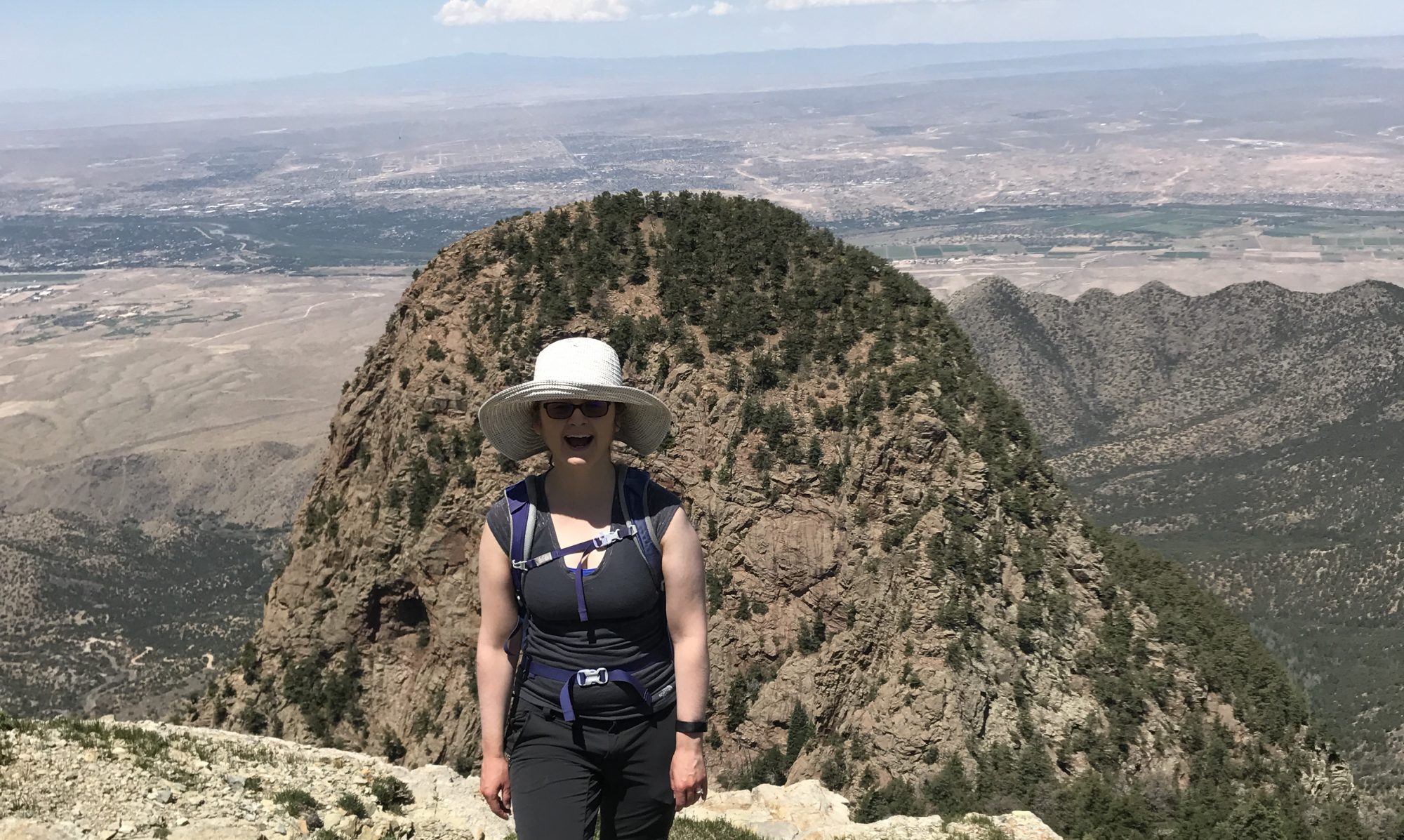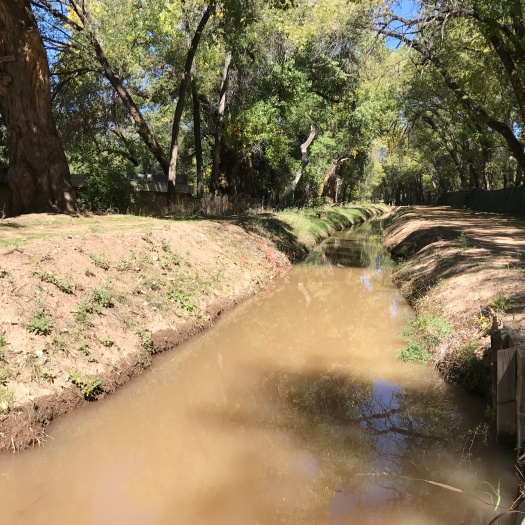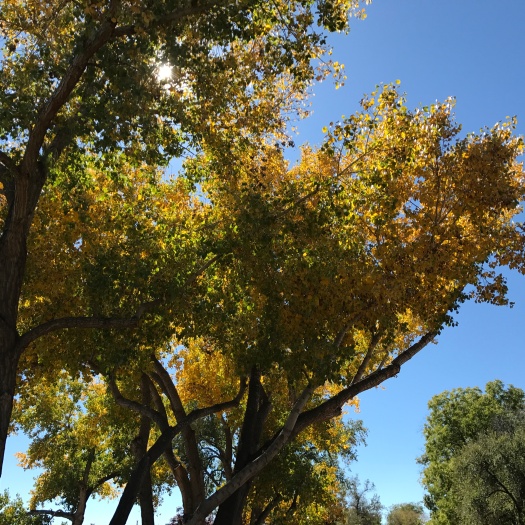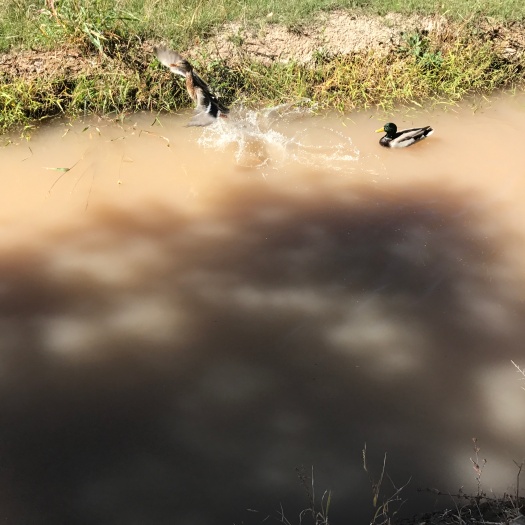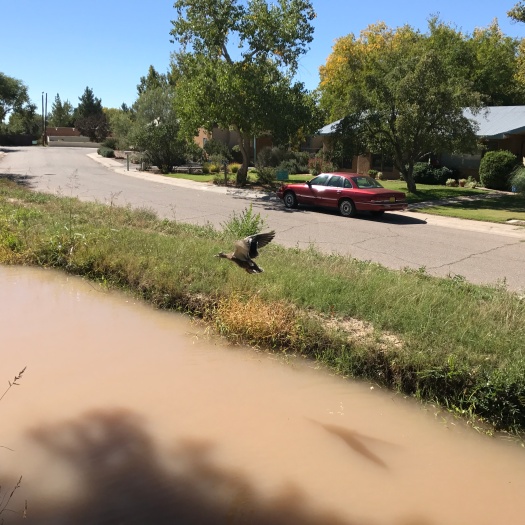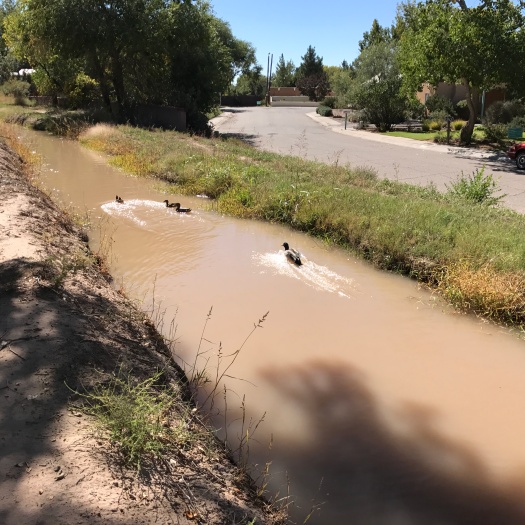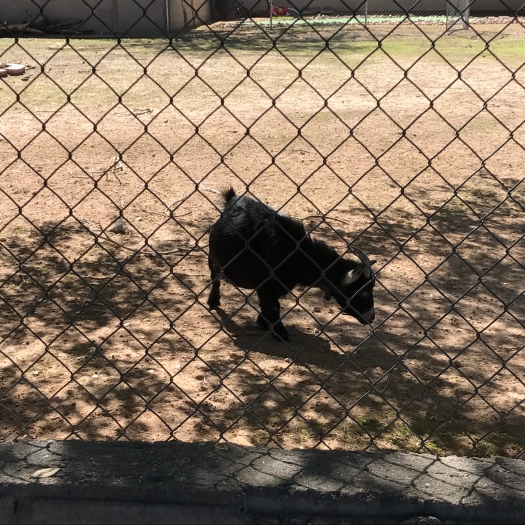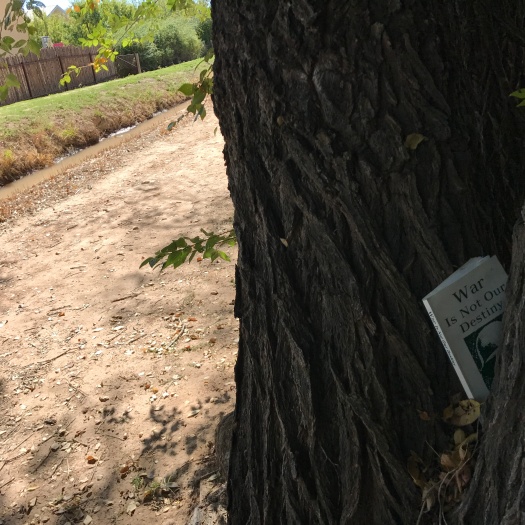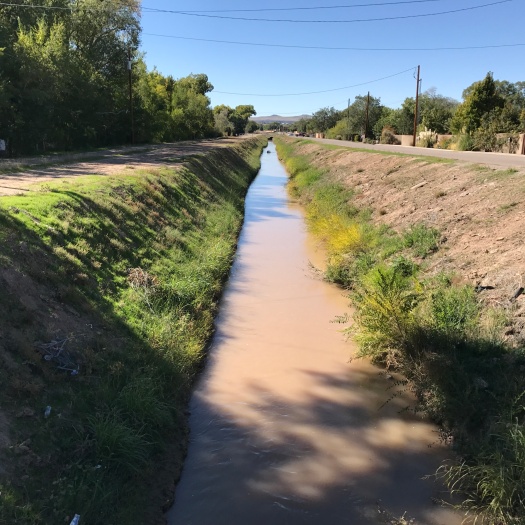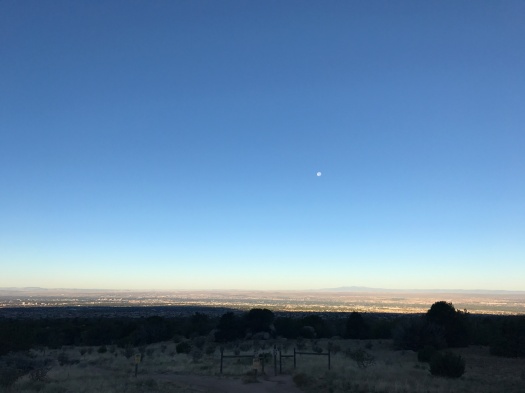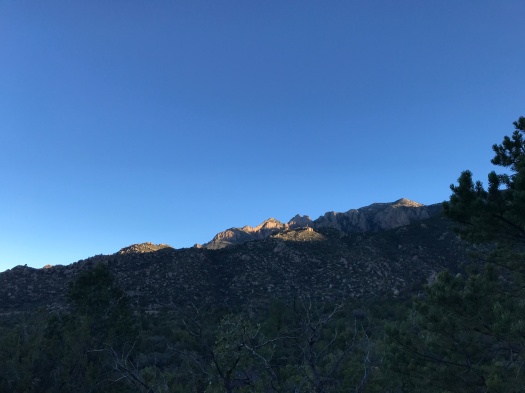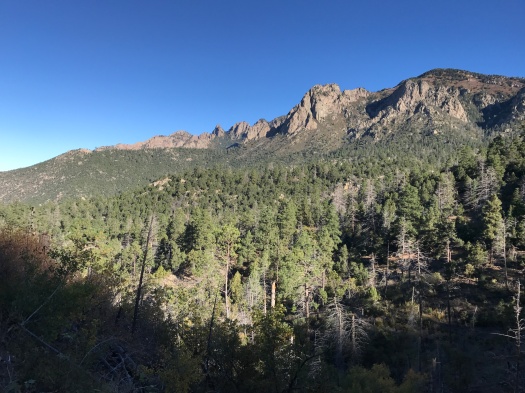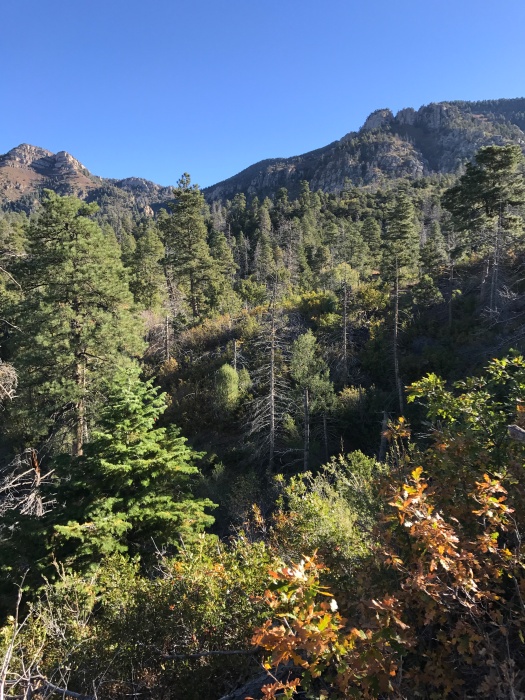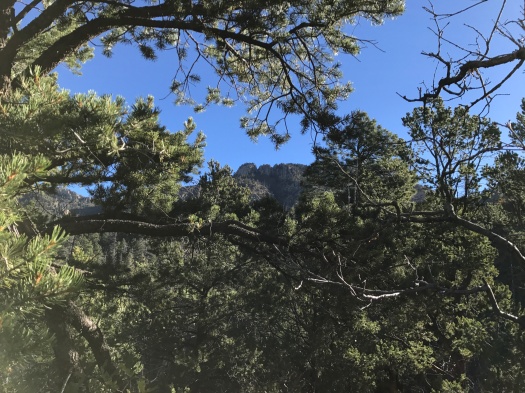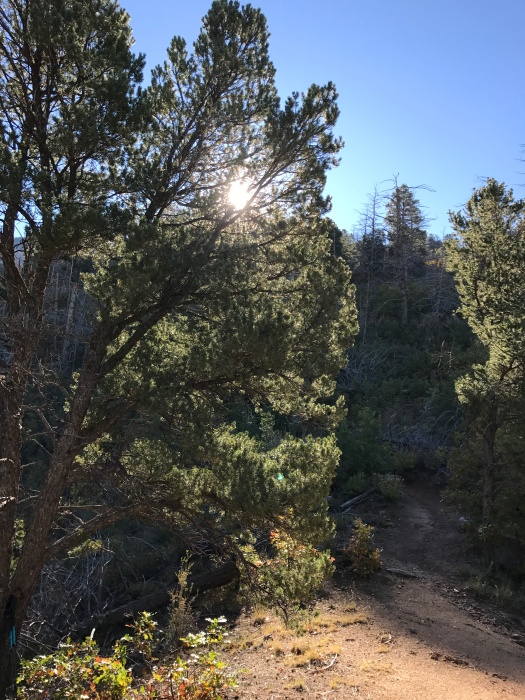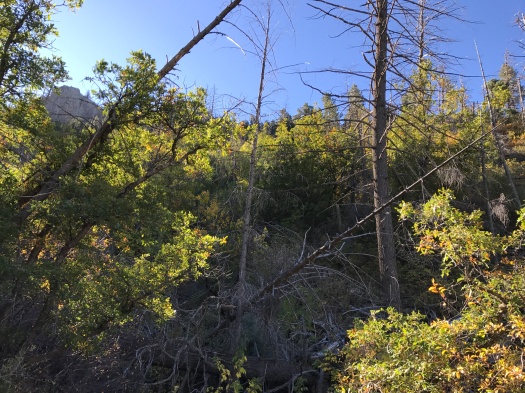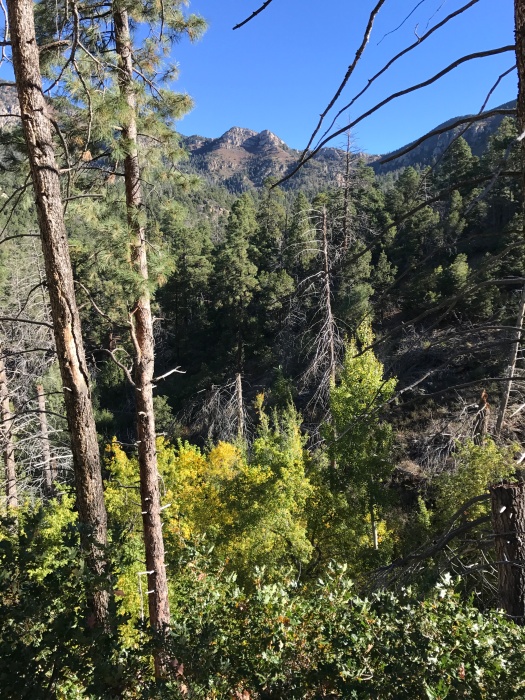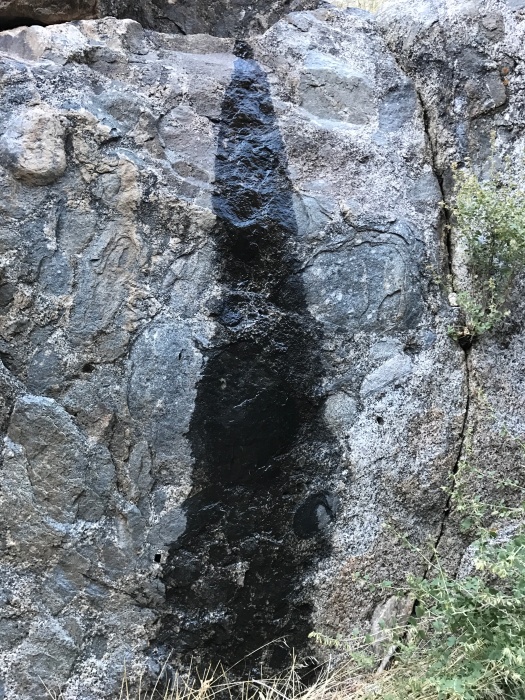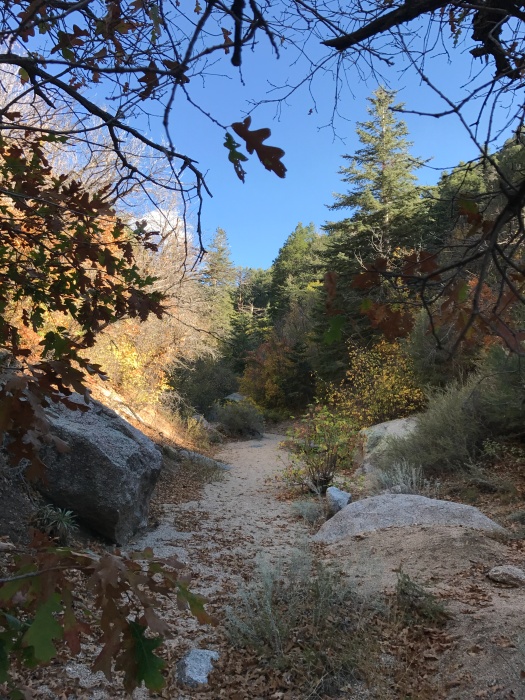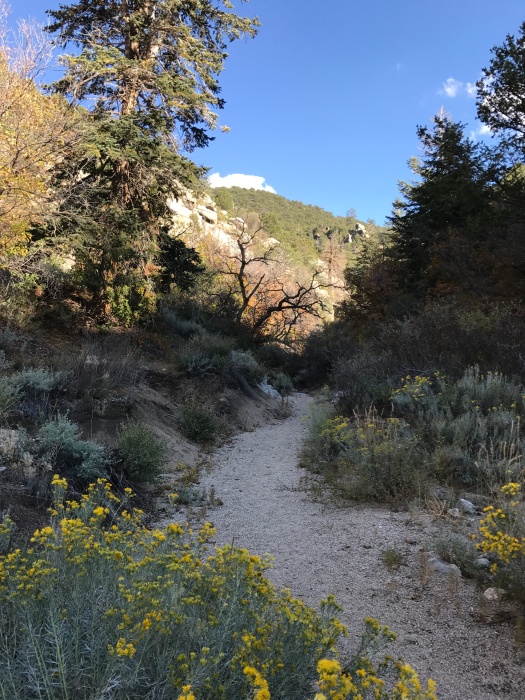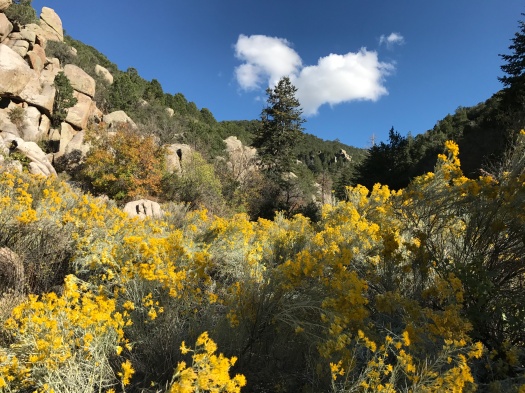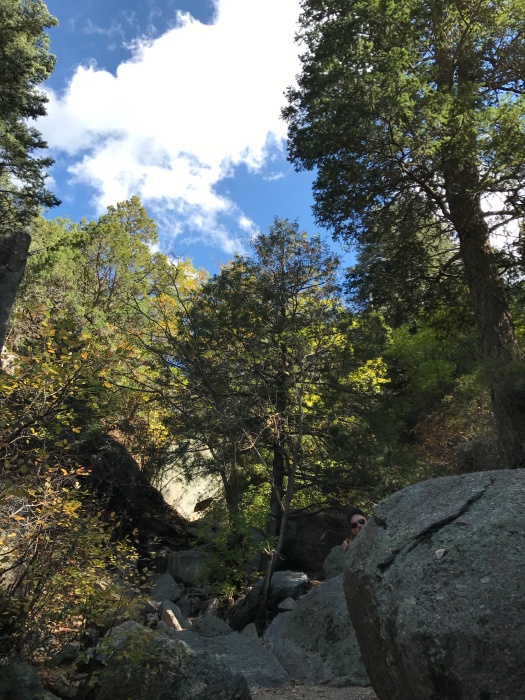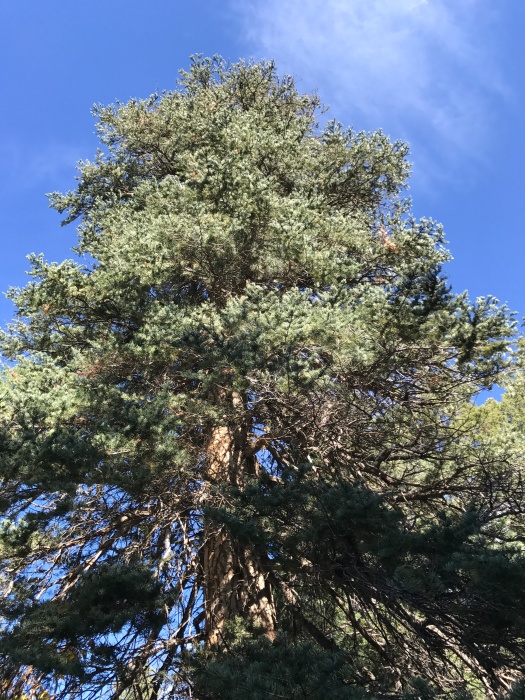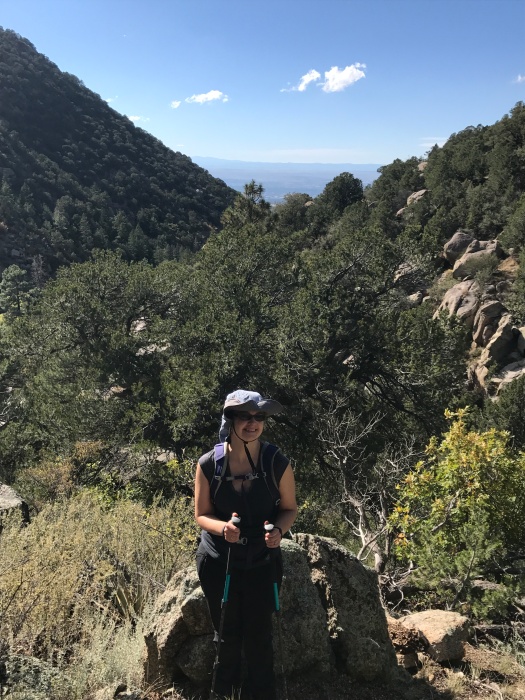The Buddha advises letting go of expectation.
But when you are hiking a trail called Hawk Watch, it is human nature to expect hawks.
So my eyes were glued to the sky as we climbed out of an arroyo in Tijeras Canyon.
The day was warm and brilliant blue, with a stiff and surprisingly cool wind blowing – sometimes hard – from the southwest.
Cactus, cedar, juniper and desert shrubs crowded in on the sun-baked trail. Herbaceous smells I didn’t recognize occasionally drifted my way.
Seemingly every rock on the trail displayed what looked to us like deposits of bear scat.
I salute any bear that could navigate this trail. It is wildly steep. It corkscrews, rather than switchbacks; when you come to a rare switchback, it feels like a break. No two websites agree on this hike, but a pretty authoritative one says it gains 1,500 feet in two miles.
We rapidly acquired the best views in existence of Tijeras Canyon, a ridge of rumpled foothills stretching to our south.
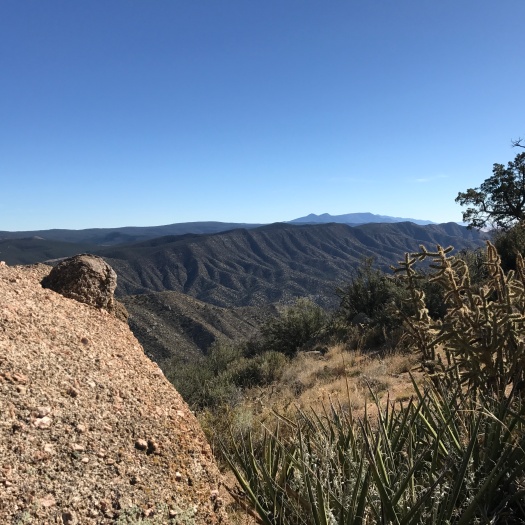
Cottonwoods turning yellow in the valley. A few peaks of the Manzanitas jutted up beyond the valley, and further still, a glimpse of the Manzano crest.
Far below, the UNM golf course and the airport control tower. Way across the Rio Grande Valley to the west, the arrowhead range – the Sierra Ladrones – and the distant Magdalena and San Mateo ranges blending into one.
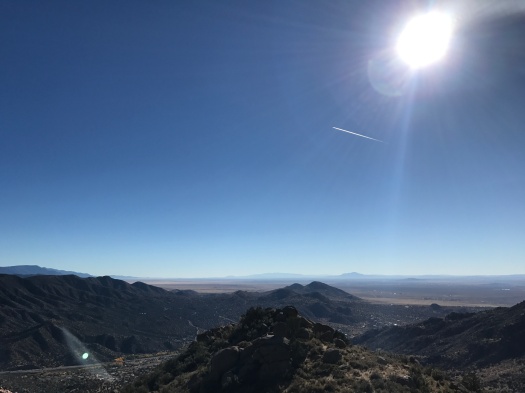
In front of us, increasingly, were boulders. Pink and gray granite boulders with sprinklings of green, orange and pale blue moss. Balanced rocks. Flat boulders turned on their side, perfect for standing on. Kingly thrones.
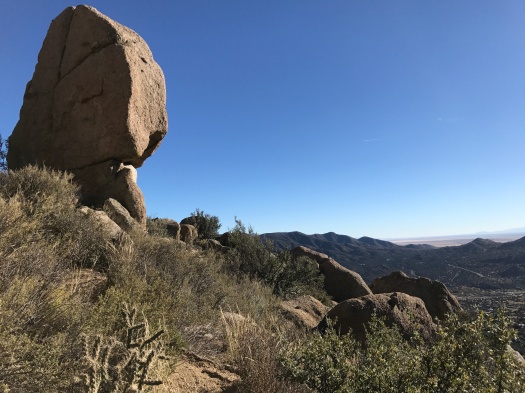
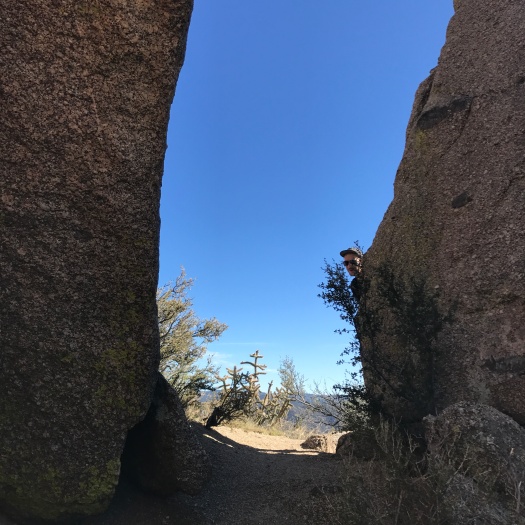
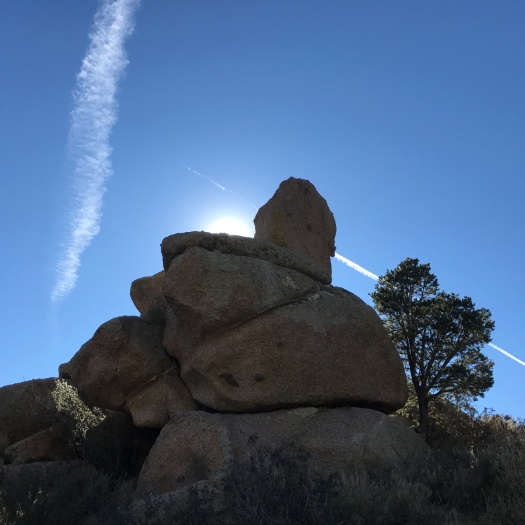
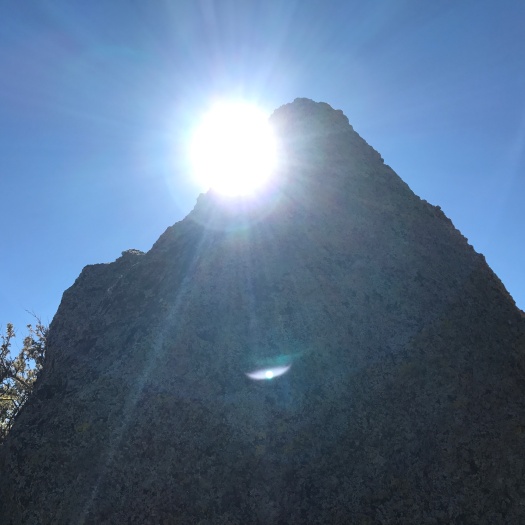
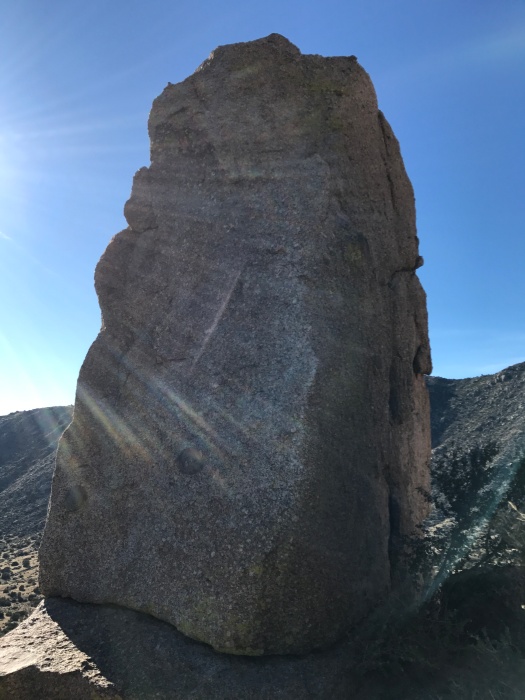
We climbed on them. We repeatedly crossed a seam of hollow-sounding black rock that felt almost like pavement.
One more push, gusts of wind lifting us up the mountain in the empty stretches between clusters of rock.
The trail turned, and we found a perfect group of flat boulders for sitting.
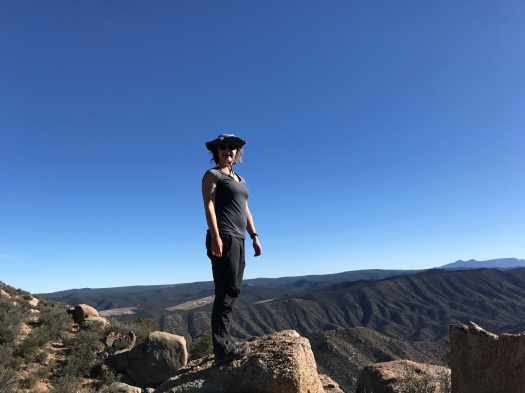
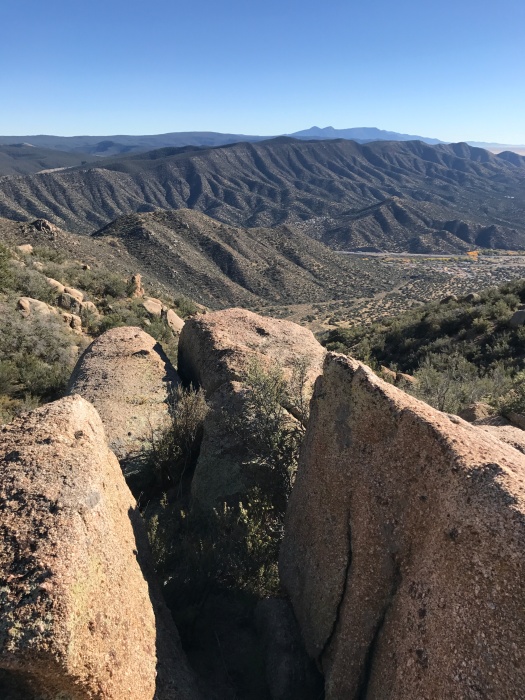
Bluejays flew overhead. A wren sang sweetly. We consulted our guide to Rocky Mountain animal scat (this is a thing – jealous?), which neither confirmed nor denied our scat identifications as bear and bobcat.
We could’ve kept going. Some friends of mine did when they hiked Hawk Watch, pushing all the way up the ridge to South Sandia Peak and back.
They must have bionic knees.
On many hikes, I put my exertion into the climb and coast on the way down, soaking up the scenery.
If there was anything different to see on the way down, I didn’t see it. I was focusing on keeping my feet under me on the steep and rocky grade. My lower body slowly composed a symphony of aches. My right knee was the tuba, blurting its presence regularly. The ball of my left foot, my right big toe and my hip flexors occasionally contributed a phrase.
I walked sideways or stagger-stepped to keep my balance. I fell on my arse (and was unharmed; God bless sturdy hiking pants.) Twice we found ourselves at the end of an arroyo because we’d missed a bend in the trail, eyes glued to our feet.
The half-mile of Three Gun Springs trail we borrowed to get back to the car was wide and gentle. The ache symphony quieted. Late-afternoon sun slanted through the canyon, wind sailing through the wild grasses, butterflies and birds making their late-day rounds.
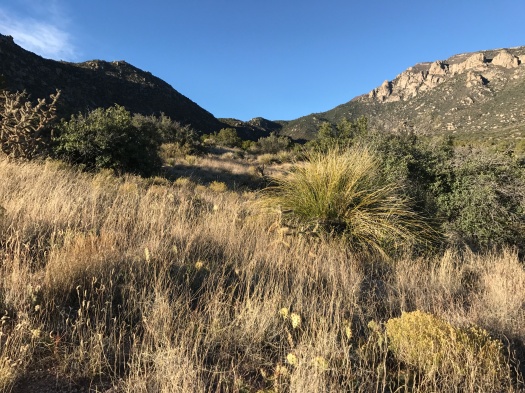
Hawks?
Not a one to be seen.
Hike length: 5 miles
Trail traffic: moderate
Difficulty: difficult
Wildlife spotted: butterflies, skinny and fat lizards, bluejays, wrens
